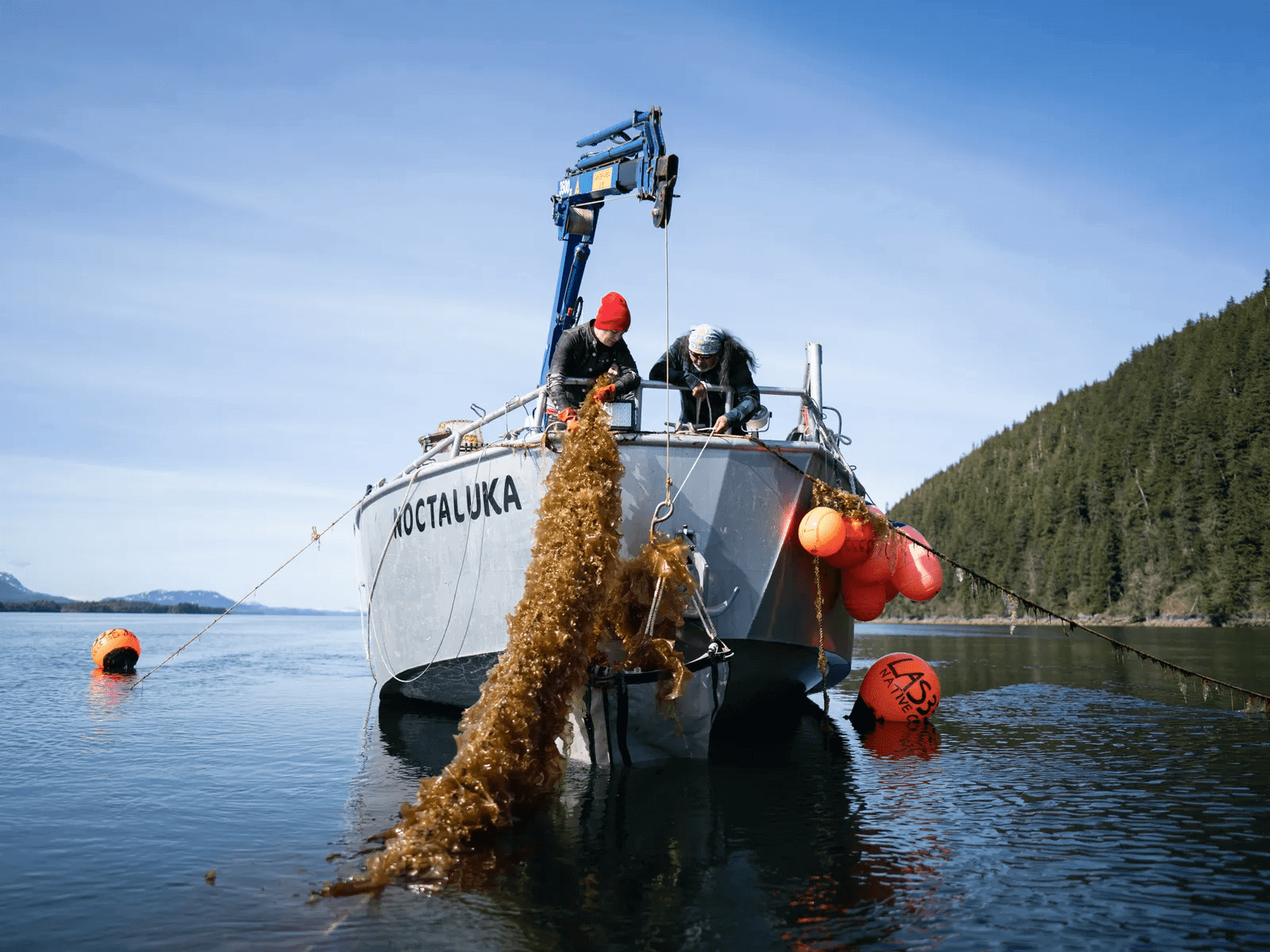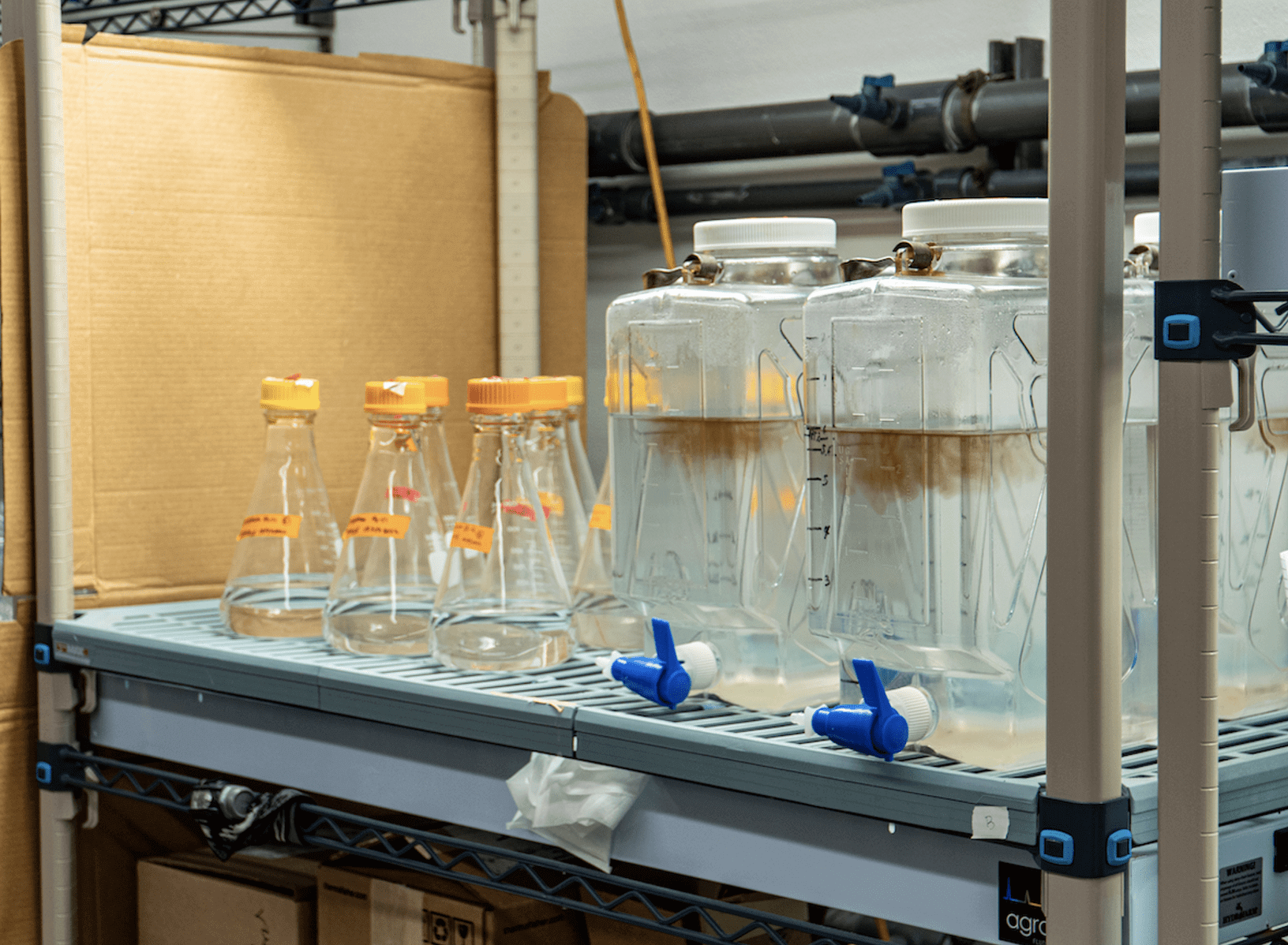
Our oceans have soaked up more than one-third of man-made carbon dioxide emissions since the industrial revolution. Yet increased levels of carbon dioxide in the atmosphere and the ocean are making seawater warmer and more acidic, causing devastation to coastal and marine ecosystems.
The vast majority of ocean-related philanthropic funding currently supports the conservation and restoration of marine habitats. While important, these measures are only one part of the solution and are insufficient to protect against climate stressors on their own. To help keep climate change in check, we must support solutions that both improve ocean health and aid in the ocean’s capacity to absorb and store carbon dioxide.
On this Earth Day, we reflect on how to make the ocean our ally in fighting climate change and restoring marine ecosystem health.
Climate change impacts are hurting marine ecosystems and vulnerable communities
Greenhouse gas emissions have led to unprecedented levels of ocean warming and acidification. Surface seawater has warmed by nearly 0.88° C since the last century, exacerbating extreme regional ocean warming called marine heatwaves, which have become more frequent, longer, and hotter. Over 57% of the ocean has experienced marine heatwaves compared to just 2% a century ago. Marine heatwaves are associated with mass mortality events for sensitive marine ecosystems, including kelp forests, seagrass, mangroves, and coral reefs, as well as economically important species such as lobster, snow crab, and scallops. Higher water temperatures associated with marine heatwaves can also exacerbate extreme weather events such as tropical storms and hurricanes, and disrupt the water cycle, making floods, droughts, and wildfires on land more commonplace.
Seawater acidity has increased by approximately 30% since pre-industrial levels as the ocean absorbs more CO2 due to higher concentrations of carbon dioxide in the atmosphere. Acidic water inhibits the shell formation of organisms including shellfish and has killed over half of the coral reefs globally, disrupting the well-being of a quarter of marine life. Local interventions to prevent further bleaching of coral reefs can only do so much while the global drivers of the problem continue to worsen.
Ocean ecosystems provide food, energy, tourism, and services such as climate and weather regulation. This means that declining ocean health is a major risk to our economies and societies. Impacts on marine ecosystems severely disrupt the marine food chain, leading to collapses of regional fisheries and aquaculture. These impacts make coastal communities more vulnerable.
Over 3 billion people around the world rely on the ocean as a major food source and many fishers’ economic livelihoods are threatened worldwide. Many of these communities, including developing island nations and indigenous communities, are not large polluters themselves, yet they are the ones suffering the most severe impacts. The recent IPCC Working Group II report recognizes the important interdependencies between climate, ecosystems, biodiversity, and human societies, and recommends steps to reduce carbon emissions, adapt to a changing climate, and remove excess carbon dioxide to prevent imminent and irreversible impacts on our ocean and coastal regions.
Making the ocean an ally in our fight against climate change
Ocean-based carbon dioxide removal (CDR) methods enhance the ocean’s natural ability to safely remove and sequester carbon dioxide while also helping to improve ocean health and increase the resilience of marine ecosystems against climate change impacts. Seaweed cultivation and ocean alkalinity enhancement, both highlighted in the recent National Academies report, are just two examples of a set of approaches being explored by ClimateWorks. CDR approaches have varying levels of permanence and potential for removing and storing CO2. Thus, the world will benefit from a diverse portfolio of carbon removal strategies to ensure we meet climate goals.
Seaweed is grown virtually all over the world and has been harvested and consumed by humans for centuries. Seaweed cultivation does not require land or fresh water, and it can be used for biofuels, animal feed, and bioremediation. In addition to displacing emission-intensive products, seaweed can be buried or exported to the deep ocean after sequestering CO2. It has the potential to remove around 0.03-0.1 Gt CO2 globally.
Today, the majority of seaweed is grown off the coasts of Asia and East Africa, though the industry is emerging in Europe, the Americas, and Oceania. Indigenous groups working to reemphasize the ability of seaweed to support food sovereignty, climate resilience, and connections to tradition are playing an increasingly important role in developing seaweed cultivation approaches. Supporting the use of indigenous knowledge and practices is a key opportunity in this space.
Seaweed cultivation as an approach, still requires improved measurement and verification of the CO2 sequestered. Another major barrier to scale is helping farmers navigate the permitting landscape, which could easily take years and incur significant legal costs. Philanthropy is uniquely positioned to support and facilitate the convening and co-creation process with policymakers, scientists, farmers, and communities in getting this field to scale rapidly and responsibly.

Ocean alkalinity enhancement (OAE) reduces ocean acidification by imitating naturally occurring processes where alkaline rocks are washed into the ocean. OAE has the potential to remove between 0.1-1 Gt CO2 per year, and the ability to sequester CO2 for centuries, making it one of the most effective and durable CO2 removal approaches. In addition to addressing climate change, OAE can also protect nearby coral reefs and shellfish by reducing seawater acidity. However, this approach is still nascent and is just beginning to be tested on a very small scale. More questions need to be answered, such as the efficiency and effectiveness of CO2 sequestration and the impact of additional alkalinity on marine creatures. Philanthropy can help catalyze significant research funding from the public and private sectors and support the participation of local communities throughout.

Key recommendations for philanthropy
Up to this point, ocean-related philanthropy funding has focused primarily on restoration and conservation efforts. Funding is needed to address both the symptoms and the cause of ocean climate impacts. While habitat protection and conservation provide significant benefits, the IPCC is clear that protected areas in their current form “do not confer resilience against ocean warming and heatwaves.” Similarly, the IPCC also states, “the effectiveness of nature-based solutions declines with warming; conservation and restoration alone will be insufficient to protect coral reefs beyond 2030.”
From 2010 to 2020, philanthropic support for marine-related issues totaled roughly $8.5 billion. Of this, about one-third went towards habitat protection and addressing ocean plastic pollution, while only 2% went to climate and energy issues, mostly for shipping decarbonization and offshore renewables. ClimateWorks data estimates roughly $7 million per year is currently going towards exploring how to safely harness the ocean’s ability to remove CO2. This is nowhere near the National Academies of Sciences’ recommendation of $2.5 billion for ocean-based CO2 removal research over the next 10 years.
Philanthropy has played a key role in catalyzing support to deepen the understanding of the ocean-climate nexus. Funders must continue to promote and support critical research needed to quickly scale and deploy solutions, and facilitate community participation so this can be done responsibly.
Philanthropy is best positioned to:
- Promote literacy of the ocean-climate nexus: increase awareness of climate change’s impacts on the ocean and the ocean’s role in addressing climate change.
- Catalyze funding for science and research: mobilize public and private sector funding through policy intervention and investments towards key research questions and areas, such as those identified by the National Academies report.
- Support ecosystem building around responsible research, co-creation, and knowledge sharing: promote transparency of science, responsible research, and local communities’ co-creation of ocean-based carbon removal approaches. Where possible, support indigenous knowledge and practices.
The bottom line
The recent IPCC Working Group III report unequivocally states that continued high rates of greenhouse gas emissions have made it necessary to reduce emissions to zero and remove gigatons of CO2 to limit global warming to 1.5° C. Climate change today is hurting our ocean and communities, and additional warming will lead to the irreversible loss of marine creatures, ecosystems, and livelihoods at a much greater scale. Most ocean philanthropy today addresses the symptom of climate impacts but more support is needed to address the root cause of climate change by removing excess CO2 from the ocean and the air. While the ocean’s potential as a tool in the climate fight is enormous, research and development around ocean CDR are still relatively new. We need to scope and test a diverse set of solutions to both reduce emissions and remove CO2 quickly. To do this, philanthropy has an important and unique role to play and must act decisively and responsibly starting today.



